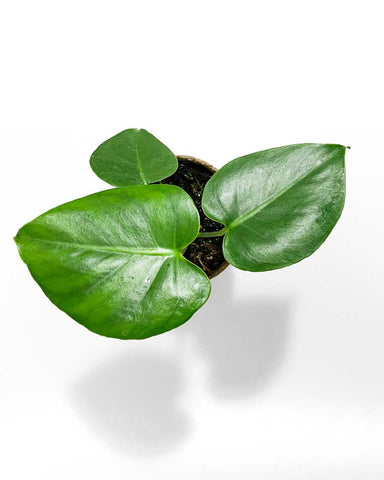Introduction
Monstera Deliciosa or Swiss Cheese Plant, is an evergreen, perennial vining plant (sometimes semi-epiphytic) that is native to the tropical climates of Centeral America tropical climates but can be grown indoors in temperate climates. It is a flowering plant that has a long, fleshy stem that can grow up to 3 meters long and large leaves that are around 20-30 cm long and 10-15 cm wide. Similar care tips apply to other Monstera varieties like Thai Constellation Monstera, known for its striking variegated leaves.
Care
Monstera Deliciosa is one of the very easy-to-grow indoor plants and can be found in many areas of the world. It can thrive in low-light conditions and be grown in the office or at home.
1. Light -
Monstera Deliciosa is a type of houseplant that requires moderate to high light. Bright indirect light is best - some direct light can be okay but not too much as it can burn the leaves. For best results keep it in a well-lit area and place it away from any drafts.
TIP: Monstera Deliciosa will grow towards the light so if you want an even plant make sure to rotate the pot every month.
2. Temperature and Humidity-
Humidity is a key factor for many plants and something important to consider when growing Monstera Deliciosa. Humidity is the amount of water vapor in the air. It is a measure of how much water is in the air and should be maintained between 40-50% RH (relative humidity). The ideal temperature for the plant is between 20-25 degrees Celsius.
TIP: Standard home temperature and humidity are completely fine but your Monstera Deliciosa will thrive and grow much faster with increased temperature and a bit of extra humidity.
3. Water -
Monstera DeIisiosa needs to be watered often, but not over-watered. The soil should be moist, but not wet. Monstera deliciosa requires a lot of water to thrive and grow because of its large leaves and stems - the plant needs to be watered at least once or twice a week depending on the size of the pot it is planted in and the temperature. The Monstera Deliciosa should be placed away from any drafts or vents that could cause the plant to dry out more quickly than normal and therefore too dry without regular watering. A self-watering system can help keep your Monstera watered.
TIP: When watering, try to use filtered water or rainwater as tap water contains minerals that can cause the leaves to develop brown spots and burn at the edges.
4. Soil and Fertiliser -
Monstera Deliciosa needs to be fertilised regularly due to its fast growth rate - on a monthly basis with an organic fertiliser that contains nitrogen, phosphorus and potassium.
Soil type for houseplants is a very important factor when it comes to keeping your plants healthy. The soil should be able to hold the water and nutrients that the plants need for growth. Monstera Deliciosa tends to be more versatile in terms of being able to grow well in a variety of mediums. A standard potting mix is fine, you can add some pumice or vermiculite to help with aeration and drainage while some people find growing them is leca as a good option.
5. Maintenance and Repotting -
Monstera Deliciosa, depending on the growth rate, can be repotted every one or two years to help it grow. However, it can also be kept in the same plant pots for several years with the right care. Because of its vining nature, we recommend staking your plants to train them upwards which helps with support and makes them look more aesthetic. Pruning can also be done depending on the shape of plant you want and as a bonus the off cuts can be used for propagation.

Propagation
Propagation of Monstera Deliciosa is very rewarding as it is relatively straight-forward and has a high success rate. It can be done year round but the best time is Spring when high grow is starting.
6. Leaf cuttings -
This option can take much longer than stem cuttings and the success rate it lower. Take a cutting of a leaf and place it in water. Once it grows roots you can place it in soil and wait for a stem to pop up. However it can takes up to 6 months to see results.
7. Stem cuttings -
Stem cuttings is the preferred method of Monstera Deliciosa propagation. Using clean tools, take a cutting of a stem just below a node and place in it clean water. Roots will for quickly and when a significant number have growth, move the cutting to soil and water regularly. If the cutting is small enough you can even use a Plant Propagation Station.



